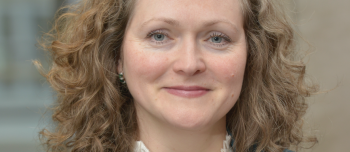CLOSER CITIES aims to create a bridge between urban science and urban practice. By collecting cases on urban practice, analysing them on the shoulders of urban science and sharing research outcomes, urban knowledge becomes shareable. In the ‘5 questions’ series, we ask scientists to briefly reflect on their research and the shareability of their insights and projects.
1. What is the main focus of your research (topic, theme, region)?
My research topic is urban statistics in the Netherlands. Specifically, I focus on quantitative empirical research on the interaction between people and their social (urban) environment. My research is based on the large-scale register data of CBS that cover the complete Dutch population.
2. Can you give a brief description of your research?
My current studies include -geographical mobility in the life course, e.g. internal migration to/from urban areas in the life course, their determinants and consequences -geographical family networks: distances between parents and children, urban/rural differences, differences between social groups -segregation in social networks -spatial inequalities, e.g. urban-rural socio-economic inequality and neighbourhood inequalities
3. How much influence does ‘local context’ have in your field of work? Can results or solutions from your research be shared with other regions easily?
My work generally focuses on the national level within the Dutch context. The Netherlands is a wealthy, small and densely populated country. Many general patterns in The Netherlands are typical for urban areas around the world, such as an influx of (skilled) labourers in urban areas, an overrepresentation of young women in urban areas, concentration of highly specialised knowledge jobs and companies in urban areas (conglomeration effects), increased distances between rurally living parents and their children. However, more specific patterns are often context-dependent and cannot be extrapolated without further study, especially not to countries with completely different histories, regimes, social structures etc.
4. What are the main lessons learned that can be used by urban initiatives?
Contrasts between urban and rural areas, and contrasts within cities. For instance, elderly in rural areas often live far away from their children (at least within the Dutch context. All distances are relatively small within the Netherlands, compared to many other countries) Many young people have migrated to cities for education and work, especially those with high potential. On average, people in rural areas have lower socio-economic positions. Around the large Dutch cities in the west and middle of the country, people are wealthier on average. However, within the inner cities there can be large contrasts too between poor and wealthy inhabitants. This goes hand in hand with socio-economic segregation in urban neighbourhoods and might be related to inequality in opportunities between inhabitants of large cities. How to counter those inequalities, or mitigate their negative effects is something that can be picked up by urban initiatives and policy makers alike.
5. How do you think cities can implement these lessons?
You cannot lead while blindfolded. Local governments need data and research to get a clear picture of the issues in their city. Mere ‘numbers’ are not enough, in-depth research is needed to go beyond mere correlations and get a fuller understanding of social processes in the city, such as causes and consequences of socio-economic inequality. Statistics Netherlands can play an important role by providing independent, objective data as well as scientific research about social and socio-economic characteristics of municipalities and the life courses of their inhabitants.












